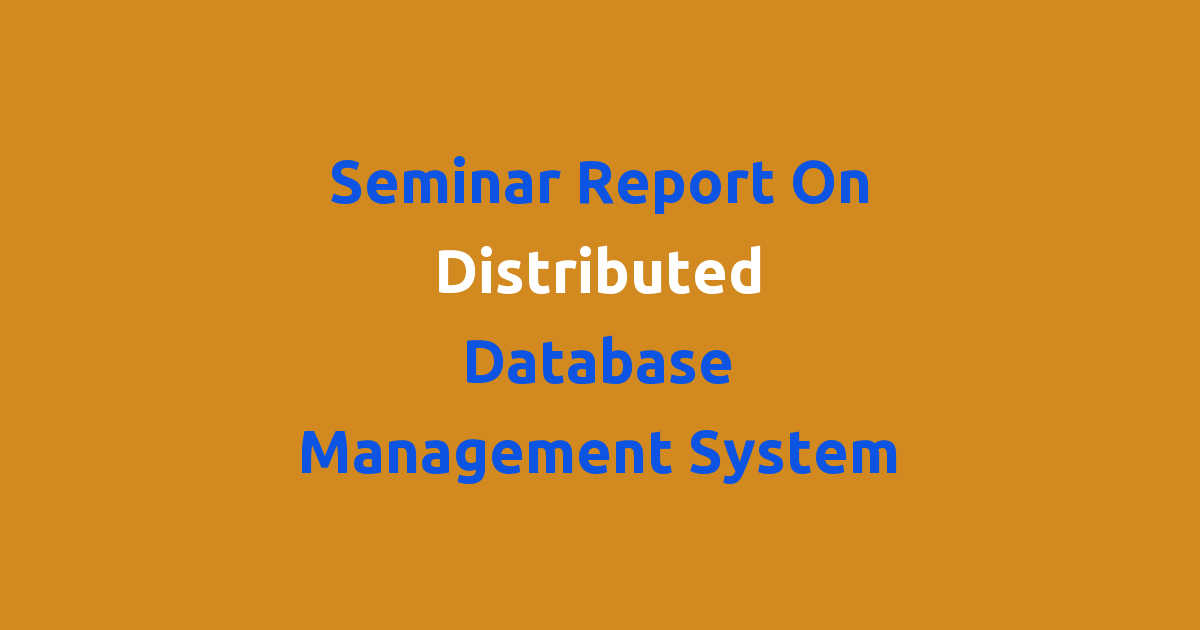Report on a seminar about distributed database management systems.
Introduction
Distributed Database Management System (DDBMS) is a system that allows data to be stored in multiple locations, while being accessed and managed as a single database. This technology is becoming increasingly important as organizations collect and store vast amounts of data that need to be accessed by multiple users simultaneously. In this seminar report, we will discuss the importance of DDBMS, the existing challenges, and propose a new system to overcome those challenges.
Problem Statement
The existing centralized database management systems face various limitations when it comes to handling large amounts of data and high user traffic. These limitations include slow response times, single point of failure, and scalability issues. To overcome these limitations, a new approach is needed that allows data to be distributed across multiple nodes and managed efficiently.
Existing System
In the existing system, data is stored in a central location, and all database operations are performed on this central server. This centralized approach leads to bottlenecks and performance issues when multiple users try to access the database simultaneously. Additionally, in case of a server failure, the entire database becomes inaccessible, leading to data loss and downtime.
Disadvantages
– Slow response times due to centralized architecture
– Single point of failure
– Scalability issues
– Data loss in case of server failure
– High network latency
Proposed System
The proposed system is a distributed database management system that allows data to be distributed across multiple nodes in a network. Each node in the network will store a subset of the database, and queries can be processed in parallel, leading to faster response times. In case of a node failure, the data can be replicated to other nodes, ensuring data availability and fault tolerance.
Advantages
– Faster response times due to parallel processing
– High availability and fault tolerance
– Scalability to handle large amounts of data and high user traffic
– Reduced network latency
– Improved data security and privacy
Features
– Data distribution: Data is distributed across multiple nodes in the network
– Replication: Data can be replicated to ensure availability and fault tolerance
– Parallel processing: Queries can be processed in parallel, leading to faster response times
– Scalability: System can easily scale to handle large amounts of data and high user traffic
– Data security: Enhanced data security and privacy measures to protect sensitive information
Conclusion
In conclusion, Distributed Database Management System is a technology that is essential for organizations to efficiently manage and access large amounts of data. By overcoming the limitations of centralized systems, DDBMS provides faster response times, high availability, scalability, and improved security. The proposed system aims to address these challenges and provide a more efficient and reliable solution for data management in the modern world. With the increasing reliance on data for decision-making, it is crucial for organizations to adopt a distributed approach to database management to stay competitive in the market.

